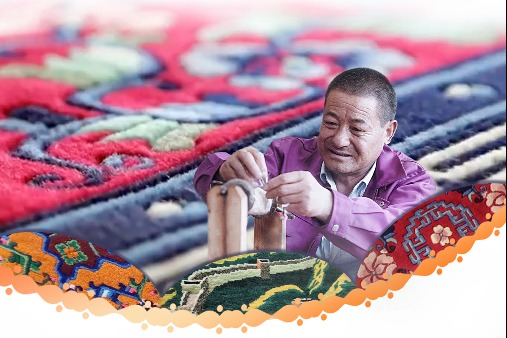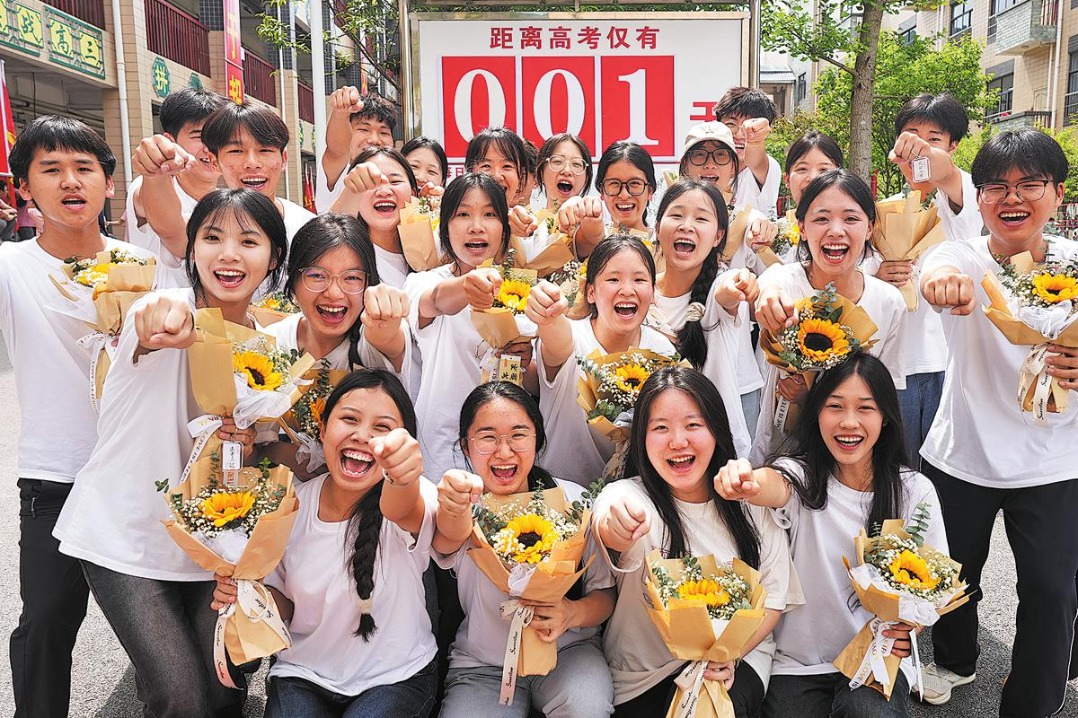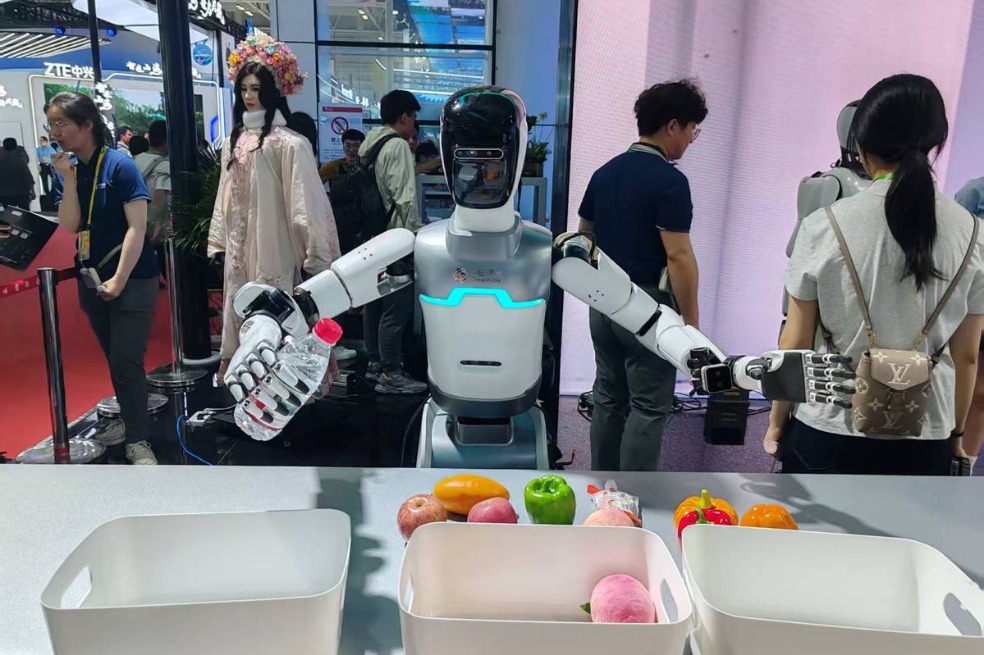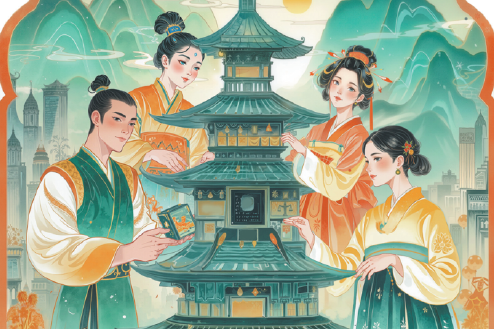Traditional culture creating new businesses


While modern technology is empowering, transforming and reshaping traditional industries, traditional culture is creating new business opportunities and helping drive China's high-quality development. The rapid development of technologies such as big data, cloud computing, 5G and artificial intelligence (AI) in the new era has changed the way traditional culture is experienced and promoted.
New technologies used in digital museums, virtual reality (VR) exhibitions and augmented reality interactive experiences can more vividly and intuitively promote traditional culture, allowing people to transcend the limits of time and space while experiencing the charm of traditional culture.
For example, about 900,000 pieces and sets of cultural relics, or about 48 percent of total collection, at the Palace Museum (Forbidden City) in Beijing had been digitalized till the end of last year. More than 100,000 high-definition images of these artifacts are on display, allowing visitors to experience them through VR technology in the museum.
The Dunhuang Academy, in charge of the Mogao Grottoes, a 1,600-year-old UNESCO World Heritage Site in Dunhuang, Gansu province, has built a rich base of cultural resources by developing a complete system integrating the digital cultural heritage collection with processing, storage and display technologies.
In fact, new generation information and communications technology (ICT) is penetrating into every corner of society at an unprecedented rate and scale. The inheritance and innovation of traditional culture have thus created new development opportunities, giving rise to new business models which cater to people's new cultural needs.
People are developing new aesthetic interests and enjoying new experiences thanks to the application of new technologies. For example, many young people love to wear hanfu (a traditional Chinese dress) when visiting scenic spots, especially in first- and second-tier cities and cities with a rich history. The hanfu market was worth 14.47 billion yuan ($2.06 billion) in 2023, and is expected to increase to 24.18 billion yuan by 2027.
Another apt example of the integration of new technology and traditional Chinese culture is the video game Black Myth: Wukong, which many consider a "milestone" in the Chinese gaming industry. Released on Aug 20, the game acquired immense popularity on major gaming platforms. On Steam, the leading gaming platform, it occupied top spot on the global chart. Within an hour of being officially uploaded on Steam, the game had more than 1 million concurrent players. The next day, the figure increased to 2.2 million. And in just two days, the game had sold 8.4 million units on Steam, earning a gross revenue of more than $400 million.
The application and promotion of new generation ICT have given rise to new demands, enriching traditional culture. New technologies are also shaping people's lives in fields such as communication, education, entertainment, work, consumption, healthcare, transport and finance.
The integration of hard and soft power indeed reflects China's high-quality development. The development of new technologies has facilitated the commercialization of traditional culture. Cultural relics, ancient paintings, sculptures, and calligraphy and architecture works can now be stored and displayed on digital platforms, promoting traditional culture and enriching viewers' experiences. And advanced 3D printing technology can replicate and produce artworks in a more effective and efficient way, better meeting people's demands at a lower cost.
With traditional Chinese culture enjoying a revival in the consumer market, the growing popularity of Chinese chic products of vintage brands reflects the country's high-quality development. Official data show that last year, the number of Douyin users buying vintage brands rose by 38 percent year-on-year, while the number of older, renowned businesses generating revenue on Douyin increased by 89 percent. Time-honored products and brands not only demonstrate China's hard power but also enhance and promote the country's soft power.
The key to brand building is innovation and integration. The cultural and manufacturing industries can achieve high-quality development only by supporting each other. Since the consumer goods industry tends to incorporate Chinese elements into product design, packaging and marketing strategies, popular brands, rather than the industry as a whole, can support each other and form a flywheel effect.
Of course, more efforts should be made to further boost traditional Chinese culture, and one way of doing that is to effectively use more emerging technologies. China needs to promote the digitalization of industries, accelerate the digital reconstruction of cultural heritage, and popularize traditional cultural products and services using digital technology.
While the integration of traditional culture with emerging formats such as popular variety shows, self-media live broadcasts and online performances improves new cultural products and services, and enriches consumers' aesthetic experience, traditional culture can be integrated with newly emerging business formats such as popular entertainment programs, livestreaming and online performance to create new cultural products and services, and enrich consumers' aesthetic experience. As a matter of fact, the collaboration of traditional culture and new media platforms can create valuable and interesting content which would attract more young people.
And rural areas can establish intangible cultural heritage workshops to help promote rural cultural revitalization and industrial prosperity, while tourism projects can integrate with unique local culture to enrich visitors' experiences.

The views don't necessarily represent those of China Daily.
If you have a specific expertise, or would like to share your thought about our stories, then send us your writings at opinion@chinadaily.com.cn, and comment@chinadaily.com.cn.



































